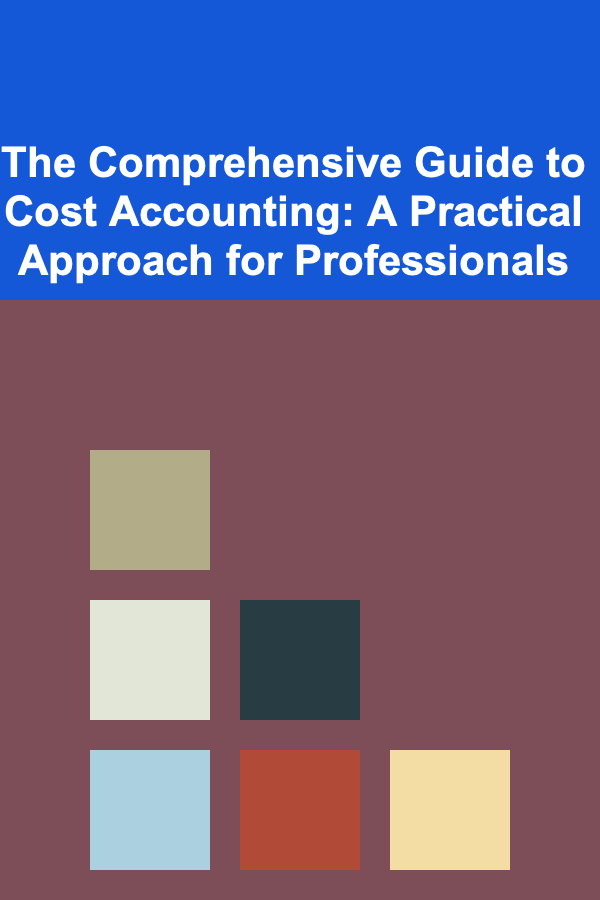
How to Build a Comprehensive Container Garden Checklist
ebook include PDF & Audio bundle (Micro Guide)
$12.99$9.99
Limited Time Offer! Order within the next:
Not available at this time

Container gardening has become an increasingly popular way to bring nature into smaller spaces, whether it's an apartment, balcony, or even a limited backyard area. It allows you to grow a wide variety of plants, from flowers to vegetables, herbs, and even dwarf trees, without the need for a traditional in-ground garden. One of the main advantages of container gardening is its versatility -- it allows you to cultivate a vibrant garden in spaces where soil quality or space limitations may otherwise hinder gardening efforts.
However, creating and maintaining a thriving container garden requires careful planning and organization. One of the most effective ways to ensure your garden's success is by creating a comprehensive container garden checklist. This checklist will help you stay organized, focused, and prepared for all stages of gardening, from setup to maintenance. Whether you're a beginner or an experienced gardener, a checklist can keep you on track and ensure you don't miss any crucial steps.
Choosing the Right Containers
Before you begin planting, it's essential to choose the right containers. Your containers should suit the plants you intend to grow and fit well in your available space.
Consider the Following:
- Size: Ensure your container is large enough to accommodate the root system of the plant. For example, vegetables like tomatoes need larger pots (at least 5 gallons), while herbs can thrive in smaller containers.
- Material : Containers come in various materials, including plastic, ceramic, terracotta, wood, and metal. Each material has its pros and cons:
- Plastic: Lightweight and inexpensive, but may not offer the same aesthetic appeal as other materials.
- Ceramic/Terracotta: Heavier and more attractive, but they dry out faster and may crack in freezing temperatures.
- Wood: Great for aesthetics and insulation, but wood containers should be treated to prevent rotting.
- Metal: Durable and stylish, but can heat up quickly, potentially damaging the plants.
- Drainage: Make sure each container has adequate drainage holes to prevent waterlogging, which can lead to root rot.
Checklist Items:
- Measure the space where you'll place the containers to ensure they fit.
- Select containers based on plant type and material preferences.
- Ensure that each container has proper drainage.
Selecting the Right Soil
The soil you use for your container garden is crucial for plant health. Unlike garden soil, which can be used directly in the ground, container plants need well-draining, nutrient-rich soil to thrive.
Key Considerations:
- Soilless Potting Mix: Most container gardens benefit from soilless potting mixes, which are specially formulated to promote good drainage and air circulation around plant roots.
- Organic vs. Synthetic Soil: Organic potting soils are ideal for growing vegetables, herbs, and flowers because they are free from harmful chemicals. On the other hand, synthetic soils may contain slow-release fertilizers.
- Custom Blends: Sometimes, you may need to create a custom mix. For instance, a cactus potting mix would be appropriate for succulents and cacti, which require excellent drainage.
Checklist Items:
- Choose a quality potting mix suitable for your plant type.
- Ensure the mix is light, well-draining, and nutrient-rich.
- Consider adding organic matter or compost for added nutrients.
Choosing Plants for Your Container Garden
Selecting the right plants is one of the most exciting but challenging parts of container gardening. The plants you choose will depend on factors like available sunlight, temperature, and the container size.
Things to Keep in Mind:
- Sunlight: Make sure to select plants that are appropriate for the light conditions in your garden. Some plants need full sun (6+ hours of sunlight), while others may thrive in partial or full shade.
- Size of Plants: Consider the mature size of your plants. Some plants grow large and may need bigger containers, while smaller plants like herbs or annual flowers can fit in smaller pots.
- Seasonality: Choose plants that suit your growing season. Annuals provide a season-long display of color, while perennials may take a year or more to reach their full potential.
- Companion Planting: Certain plants grow better together, while others might hinder each other's growth. Research companion planting to ensure you're creating a harmonious plant environment in your containers.
Checklist Items:
- Assess the light conditions in your gardening area (full sun, partial sun, shade).
- Choose plants suited to your climate and seasonal conditions.
- Consider the mature size of plants to ensure they fit the containers.
Choosing Fertilizers
Fertilizers are crucial for container gardens because they help provide the essential nutrients plants need to grow. Since plants in containers have limited access to nutrients, you'll need to supplement with fertilizer.
Types of Fertilizers:
- Slow-Release Fertilizers: These release nutrients over time and are ideal for containers, as they don't need to be reapplied frequently.
- Liquid Fertilizers: These are fast-acting and can be applied more frequently. They're great for feeding plants during the growing season.
- Organic Fertilizers: Compost, bone meal, and fish emulsion are all natural options that improve the health of your plants without chemicals.
Checklist Items:
- Choose the right type of fertilizer based on your plants' needs.
- Apply fertilizers according to the manufacturer's instructions.
- Consider using organic fertilizers for a more sustainable approach.
Watering System and Schedule
Watering is a vital aspect of container gardening. Since containers can dry out more quickly than ground soil, establishing an appropriate watering routine is essential to keep your plants healthy.
Watering Tips:
- Consistency: Watering regularly is key. Most plants in containers need more frequent watering than those in the ground.
- Watering Method: Water at the base of the plant rather than from overhead to avoid wetting the foliage and preventing fungal growth.
- Self-Watering Containers: Consider using self-watering pots or adding a drip irrigation system to ensure consistent moisture levels.
Checklist Items:
- Set a regular watering schedule based on the specific needs of your plants.
- Consider installing an irrigation system for efficiency.
- Check soil moisture regularly to ensure plants aren't underwatered or overwatered.
Temperature and Climate Control
The temperature and climate conditions play a significant role in the success of your container garden. Plants in containers are more susceptible to temperature fluctuations, so it's important to ensure your plants are protected from extreme heat or cold.
Key Considerations:
- Hot Weather: During the summer, container plants are at risk of drying out faster. Place your containers in areas that provide some afternoon shade or use shading techniques to protect sensitive plants.
- Cold Weather: Containers are more susceptible to freezing in cold weather. Consider moving pots indoors or placing them in a sheltered area during winter months. Alternatively, wrap pots with insulating materials to protect the roots.
Checklist Items:
- Protect your plants from extreme temperatures by adjusting their position or using covers.
- Use insulating materials for pots during cold months.
- Monitor temperature changes and adjust care routines accordingly.
Pest Control
Pests can be a major problem for container gardens, especially when they find their way into the confined space of a pot. From aphids to slugs, various pests can damage your plants if not controlled.
Preventing Pests:
- Regular Inspection: Check your plants regularly for signs of pests, such as damaged leaves, holes, or sticky residue.
- Organic Pest Control: Use organic options like neem oil, diatomaceous earth, or insecticidal soap to keep pests at bay.
- Beneficial Insects: Introduce beneficial insects, like ladybugs, that can help keep harmful pests under control.
Checklist Items:
- Inspect plants regularly for signs of pests.
- Apply organic pest control measures if needed.
- Consider using beneficial insects for natural pest management.
Maintenance and Pruning
To ensure your container garden thrives throughout the growing season, regular maintenance and pruning are necessary.
Maintenance Tips:
- Pruning: Regularly prune dead or diseased parts of the plant to encourage healthy growth. Also, trim back overgrown plants to maintain their shape and size.
- Re-potting: As plants grow, they may outgrow their containers. If this happens, re-pot your plants into larger containers to prevent root-bound conditions.
- Deadheading: Remove spent flowers regularly to promote more blooms and keep plants looking tidy.
Checklist Items:
- Regularly prune, deadhead, and re-pot plants as needed.
- Keep an eye on the overall health of the plants and address any issues promptly.
- Maintain a tidy and organized container garden by cleaning pots and tools.
Conclusion
Building a comprehensive container garden checklist is an essential step in creating a thriving and well-maintained garden. By carefully selecting containers, soil, plants, and fertilizers, and maintaining a regular watering and pest control routine, you can ensure that your container garden will flourish. With this checklist as a guide, you'll be able to organize and manage your gardening tasks efficiently, ensuring that you create a space that is not only beautiful but also functional and productive.
Whether you're a seasoned gardener or just starting out, container gardening offers an accessible and rewarding way to grow plants. By following these essential steps and checking off the necessary items, you'll be on your way to cultivating a flourishing garden in no time.

How to Choose the Right Pet Furniture for Your Home
Read More
How to Soundproof a Room for Better Audio and Video Calls
Read More
The Comprehensive Guide to Cost Accounting: A Practical Approach for Professionals
Read More
What Are the Best Tools for Organizing a Home Workshop?
Read More
How to Develop VR for Scientific Research
Read More
How to Shoot Beautiful Portraits: A Comprehensive Guide
Read MoreOther Products

How to Choose the Right Pet Furniture for Your Home
Read More
How to Soundproof a Room for Better Audio and Video Calls
Read More
The Comprehensive Guide to Cost Accounting: A Practical Approach for Professionals
Read More
What Are the Best Tools for Organizing a Home Workshop?
Read More
How to Develop VR for Scientific Research
Read More